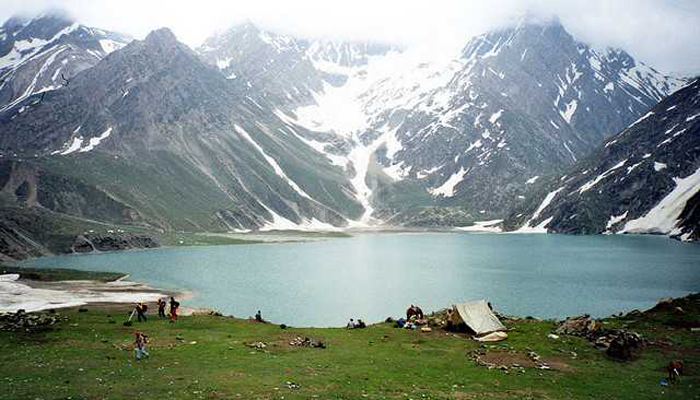Nestled at an impressive elevation, Sheshnag Lake brings you face-to-face with untouched beauty with adequate doses of adventure. Your lungs will delight in smog-free skies, and your eyes will marvel at this oligotrophic lake that is so clear that you can see the surrounding lush green meadow’s reflection on the lake that gives it an emerald green glitter. Fed by mountainous streams and melted snow, the enticing lake mostly stays frozen and inaccessible during winters. The lake is also home to several rare species of fish including the brown trout. Along with its scientific significance, the Sheshnag Lake is also associated with myths and legends of the divine serpent, Sheshnag. Locals believe that the serpent dug this lake and made it its abode, where it still resides. One of the prominent sites of Pahalgam, this lake, is easily trek-able from Chandanwari Valley, which is only about seven miles away.
Etymology of Sheshnag Lake
According to the Hindu mythology Sheshnag means the king of snakes and the lake was dug by Sheshnag himself. It is believed by the Hindus that Sheshnag stays in this Lake even today. It is one of the most ancient places of pilgrimage for the Hindus, as it lies on the track of Amarnath cave.
Sheshnag Lake is home to many types of fish among of which is the brown trout. It freezes during winter, and is inaccessible during this season due to heavy snowfall. It is surrounded by green lush meadows and mountains covered by snow. Sheshnag Lake is one of the famous tourist destinations in Kashmir Valley. It is mostly fed by melting of snow and streams coming down from mountaintops. It drains out through a stream which joins Lidder River at Pahalgam.
How to Reach Sheshnag Lake
Sheshnag Lake is situated 120 kilometers east from Srinagar and 23 km from Pahalgam. It can be accessed 113 km by road up to Chandanwari from which ponies can be hired to cover a trek of 7 km upslope to reach the Sheshnag Lake. Amarnath cave is situated 20 kilometers north of this lake. The best time to visit the lake is from the month of June to September.

